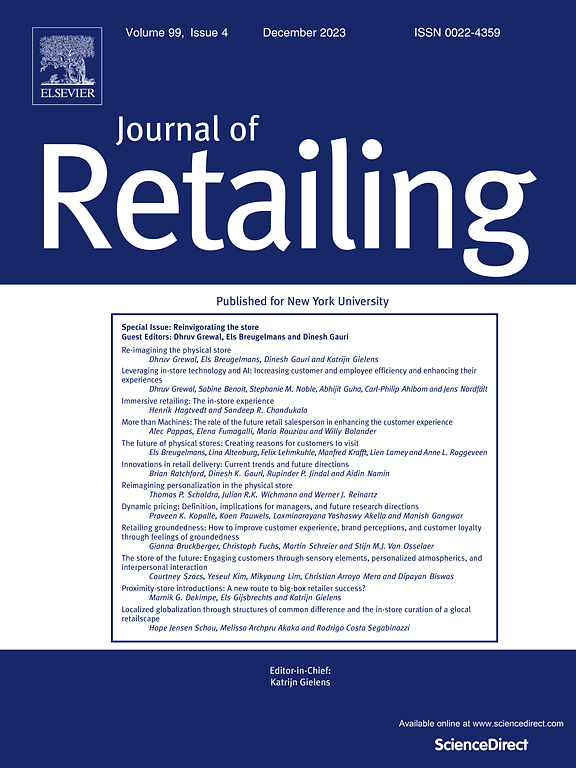A potential win-win-win strategy when pruning the direct channel: Motivating retailers to migrate to a designated intermediary
IF 10.2
1区 管理学
Q1 BUSINESS
引用次数: 0
Abstract
Many retailers prefer to directly purchase from manufacturers, yet cost concerns motivate manufacturers to periodically prune their channels by cutting off direct customers or nudging them towards intermediaries. One frequent divestment strategy is involuntary intermediation wherein the manufacturer eliminates a retailer's option to purchase directly, while steering it toward a designated intermediary. Using enactment theory from supply chain disruption literature, this research examines this strategy and customers’ subsequent decisions when facing involuntary intermediation, specifically: (1) whether or not to migrate as suggested by the manufacturer and (2) for customers that choose to migrate, how much to purchase subsequently from the intermediary, including both the manufacturer's products and other brands. Analyzing unique data provided by both a manufacturer and its designated intermediary, the authors find that although only 80 % of the customers migrated, usually all parties—the migrating customers, the manufacturer, and the intermediary—benefitted from the changes. Interestingly, purchasing increased most among the types of customers least likely to migrate, indicating that resources devoted to persuading such customers are worthwhile and can pay high dividends for both manufacturer and intermediary.
一个潜在的三赢策略,当修剪直接渠道:激励零售商迁移到指定的中介
许多零售商更喜欢直接从制造商那里采购,但出于成本考虑,制造商会定期削减渠道,切断直接客户,或将他们推向中间商。一种常见的撤资策略是非自愿中介,其中制造商消除了零售商直接购买的选择,同时将其转向指定的中介。利用供应链中断文献中的制定理论,本研究考察了这一策略以及客户在面临非自愿中介时的后续决策,具体而言:(1)是否按照制造商的建议迁移;(2)对于选择迁移的客户,随后从中介购买多少产品,包括制造商的产品和其他品牌。通过分析制造商及其指定中介机构提供的独特数据,作者发现,尽管只有80%的客户迁移,但通常所有各方——迁移的客户、制造商和中介机构——都从这些变化中受益。有趣的是,在最不可能迁移的客户类型中,购买量增加最多,这表明用于说服这些客户的资源是值得的,并且可以为制造商和中介带来高额回报。
本文章由计算机程序翻译,如有差异,请以英文原文为准。
求助全文
约1分钟内获得全文
求助全文
来源期刊

Journal of Retailing
BUSINESS-
CiteScore
15.90
自引率
6.00%
发文量
54
审稿时长
67 days
期刊介绍:
The focus of The Journal of Retailing is to advance knowledge and its practical application in the field of retailing. This includes various aspects such as retail management, evolution, and current theories. The journal covers both products and services in retail, supply chains and distribution channels that serve retailers, relationships between retailers and supply chain members, and direct marketing as well as emerging electronic markets for households. Articles published in the journal may take an economic or behavioral approach, but all are based on rigorous analysis and a deep understanding of relevant theories and existing literature. Empirical research follows the scientific method, employing modern sampling procedures and statistical analysis.
 求助内容:
求助内容: 应助结果提醒方式:
应助结果提醒方式:


